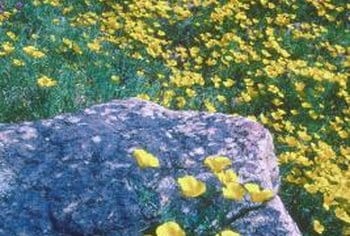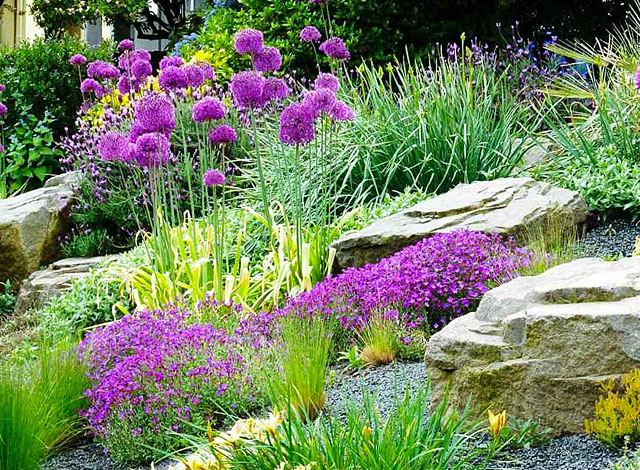NATIVE PLANTS & ROCK LANDSCAPE IDEAS
- By WillametteValleyMagazine.com Gardening Correspondent Christina Conway, Owner of Eugene Garden Design
Butterflies and hummingbirds flit from flower to flower across your rocky landscape. Rather than fight the rocky soil, designing your garden around the rocks and incorporate native plants! This allows you to build a garden that is at one with the environment. A careful selection of plants that thrive in U.S. Department of Agriculture plant hardiness zones 8 and 9 will fill every niche of a dry rock garden or surround the damp stones of a waterfall and pond.

Classic Rock Garden
Fill a sunny, dry and barren corner of the yard with large rocks, pebbles and sand mixed with organic matter to make a classic rock garden. Instead of cacti and other desert plants, layer the garden from back to front, tall to short, with a selection of drought-tolerant native shrubs such as California lilacs (Ceanothus spp.), Christmas berry (Heteromeles arbutifolia) and Western redbud (Cercis occidentalis). Scatter native wildflower seeds such as California poppy (Eschscholzia californica) and miniature lupine (Lupinus bicolor) in the late fall for additional color in the spring. Add native grasses or a sedge such as San Diego sedge (Carex spissa) along the sides to provide a border between your rock garden and traditional garden plants.
Peaceful Zen
The tranquility of a Zen garden, with its neatly placed islands of rock amid a raked sand or gravel “lake,” is a smart choice if you don’t want to spend a lot of time on maintenance. Adapting a traditional Zen landscape to incorporate native plants allows you to benignly neglect the garden during the long hot summers and wet winters of a semi-coastal climate. Native species of azaleas and rhododendrons (Rhododendron occidentale) provide color while compact varieties of Colorado blue spruce (Picea pungens) planted beyond the lake of sand or gravel give a sense of distant mountains. If your Zen garden is tiny, plant creeping junipers (Juniperus horizontalis) amid the rocks to give the islands the illusion of a spacious landscape viewed from a mountain’s top.
Dry Stream Bed
A carefully arranged dry stream bed serves as both drainage during downpours and winter storms as well as an opportunity to add native plants, bulbs and rhizomes to your garden. Plant redberry (Rhamnus crocea) and St. Catherine’s lace (Eriogonum giganteum) at the top of the stream bed to conceal the fence or hardscape where the stream originates. Then, add grasses, ground covers, bulbs and rhizomes such as deer grass (Muhlenbergia rigens), coast purple sage (Salvia leucophylla) and Pacific Coast iris (Iris douglasiana) along the rocky borders for a natural appearance.


